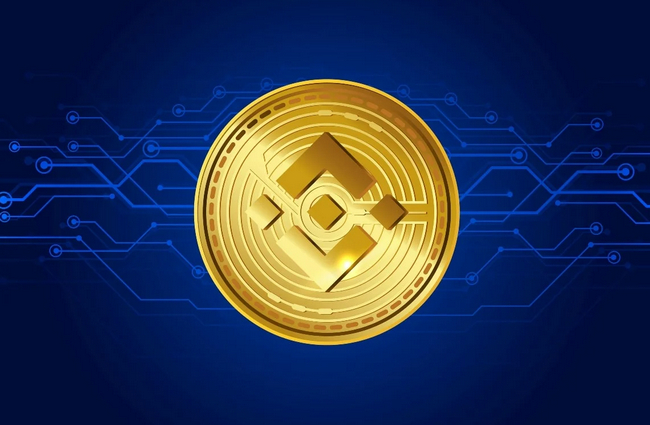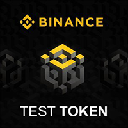-
 Bitcoin
Bitcoin $96,526.9338
2.20% -
 Ethereum
Ethereum $1,826.2081
1.11% -
 Tether USDt
Tether USDt $0.9999
0.02% -
 XRP
XRP $2.1456
1.32% -
 BNB
BNB $602.0510
0.46% -
 Solana
Solana $146.2191
1.03% -
 USDC
USDC $0.9999
0.01% -
 Dogecoin
Dogecoin $0.1715
1.27% -
 Cardano
Cardano $0.6766
2.38% -
 TRON
TRON $0.2440
-1.48% -
 Sui
Sui $3.3892
1.64% -
 Chainlink
Chainlink $13.9562
2.93% -
 Avalanche
Avalanche $19.9179
1.02% -
 Stellar
Stellar $0.2612
1.42% -
 UNUS SED LEO
UNUS SED LEO $8.7300
0.78% -
 Shiba Inu
Shiba Inu $0.0...01276
0.78% -
 Bitcoin Cash
Bitcoin Cash $377.0753
6.35% -
 Toncoin
Toncoin $3.0082
0.24% -
 Hedera
Hedera $0.1760
1.23% -
 Litecoin
Litecoin $92.4590
11.86% -
 Hyperliquid
Hyperliquid $20.7790
2.99% -
 Polkadot
Polkadot $3.9605
1.19% -
 Dai
Dai $1.0002
0.02% -
 Monero
Monero $282.9138
2.19% -
 Bitget Token
Bitget Token $4.3079
0.22% -
 Ethena USDe
Ethena USDe $1.0004
0.02% -
 Pi
Pi $0.5794
-1.57% -
 Pepe
Pepe $0.0...08036
1.93% -
 Bittensor
Bittensor $379.9508
3.12% -
 Uniswap
Uniswap $4.9441
-0.10%
bnb and btc difference
BNB, a utility token for Binance's ecosystem, differs from BTC, a decentralized store-of-value, in terms of tokenomics, transaction fees, use cases, investment strategies, and risk profiles.
Nov 05, 2024 at 10:18 pm

BNB and BTC: A Comprehensive Analysis
Introduction
Binance (BNB) and Bitcoin (BTC) are two of the most well-known and widely-traded cryptocurrencies in the world. Both cryptocurrencies have unique features and value propositions, making them suitable for different use cases. This article delves into the key differences between BNB and BTC, providing an in-depth analysis of their similarities and divergences.
Comparison of Key Features
1. Tokenomics and Supply
- BNB is the native token of the Binance exchange, a centralized cryptocurrency exchange. BNB's supply is capped at 200 million tokens, with an annual burn mechanism that reduces the total supply over time. This deflationary mechanism contributes to the scarcity and potential appreciation of BNB.
- BTC is a decentralized cryptocurrency without a central authority. Its maximum supply is capped at 21 million, with a predictable and gradual issuance rate. The scarcity and controlled issuance of BTC have contributed to its store-of-value status.
2. Transaction Fees and Network Scalability
- BNB is used to pay for transaction fees on the Binance exchange and the Binance Smart Chain (BSC). BSC is a high-speed blockchain that facilitates smart contract functionality and decentralized applications (dApps). BNB's low transaction fees and fast transaction times make it suitable for everyday transactions and micropayments.
- BTC's transaction fees are relatively higher due to its limited scalability. The Bitcoin network is slower in transaction processing compared to BSC, and its transaction fees tend to fluctuate based on network congestion.
3. Use Cases and Applications
- BNB is primarily used for paying fees on the Binance exchange and BSC. It also serves as a utility token for accessing various products and services within the Binance ecosystem, such as staking for rewards, discounted trading fees, and voting rights in Binance's governance system.
- BTC is primarily used as a store-of-value and a digital gold. Its decentralization, scarcity, and established track record make it a popular choice for long-term investments and hedging against potential inflation or financial instability.
4. Investment Strategies and Returns
- BNB's price is closely tied to the performance and growth of the Binance exchange and the BSC ecosystem. BNB's value proposition lies in its utility and potential appreciation as Binance continues to expand its operations.
- BTC's price is primarily driven by supply-side factors, such as the issuance rate and the overall market demand for decentralized store-of-value assets. BTC's price is also influenced by external factors, such as economic conditions and regulatory developments.
5. Investment Risks and Considerations
- BNB's value is highly dependent on the performance and sustainability of the Binance exchange. Centralized exchanges pose inherent risks, such as exchange hacks or regulatory scrutiny.
- BTC's volatility and price fluctuations can be a major risk for investors. However, BTC's long-term stability and established track record as a store-of-value can offset some of the risk associated with its volatility.
Conclusion
BNB and BTC are two distinct cryptocurrencies with different use cases and value propositions. BNB is a utility token for the Binance ecosystem, offering low transaction fees and access to various products and services. BTC is a decentralized store-of-value and a digital gold, recognized for its scarcity, stability, and long-term investment appeal. Understanding these differences can help investors make informed decisions based on their individual risk tolerance and investment objectives.
Disclaimer:info@kdj.com
The information provided is not trading advice. kdj.com does not assume any responsibility for any investments made based on the information provided in this article. Cryptocurrencies are highly volatile and it is highly recommended that you invest with caution after thorough research!
If you believe that the content used on this website infringes your copyright, please contact us immediately (info@kdj.com) and we will delete it promptly.
- Dogecoin (DOGE) Price Shows Signs of Recovery After a Week of Selling Pressure
- 2025-05-07 11:05:13
- The ups and downs of Jeffy Yu and Zerebro: from genius to turmoil
- 2025-05-07 11:05:13
- Dogecoin (DOGE) Price Struggles Under the $0.18 Resistance as Geopolitical Tension Rises. Here’s How DOGE Could React If It Matches 30% of US M1 Supply
- 2025-05-07 11:00:27
- Melania Trump's "Meme Coin" Got Dumped by Early Investors, Making Them Millions
- 2025-05-07 11:00:27
- Bitcoin (BTC) Head and Shoulders Pattern Could Be Forming, XRP (XRP) Drops Below 200-Day EMA
- 2025-05-07 10:55:12
- RCO Finance Is Drawing More Users Than Dogecoin and Shiba Inu Combined, Here’s Why
- 2025-05-07 10:55:12
Related knowledge

What is Ethereum’s Slashing mechanism and how to punish malicious behavior?
Feb 20,2025 at 03:08am
Key PointsOverview of slashingDifferent types of slashing in EthereumIncentives and consequences of slashingIdentifying and reporting slashed validatorsOngoing discussions and potential improvementsEthereum's Slashing Mechanism: Punishing Malicious BehaviorEthereum's slashing mechanism is an essential tool for ensuring network security and punishing mal...

What is the verifier node of Ethereum and how to become a verifier?
Feb 19,2025 at 06:00pm
The Verifier Node of Ethereum: A Comprehensive GuideKey Points:What is a Verifier Node?How to Become a Verifier NodeResponsibilities and Rewards of a Verifier NodeMinimum Requirements for Becoming a Verifier NodePotential Difficulties in Running a Verifier Node1. What is a Verifier Node?A Verifier Node is an independent entity on the Ethereum network th...

What is Ethereum’s staking, and how to participate and earn money?
Feb 19,2025 at 04:37pm
Key Points:Understanding Ethereum's Staking MechanismSteps to Participate in StakingBenefits and Rewards of StakingSecurity and Risk ConsiderationsTechnical Requirements and Hardware OptionsPotential Challenges and Troubleshooting TipsFAQs on Ethereum StakingWhat is Ethereum's Staking?Proof-of-Stake (PoS) is a consensus mechanism used in blockchain netw...

What is Ethereum’s DAO (Decentralized Autonomous Organization) and how does it work?
Feb 20,2025 at 03:12am
Key PointsDefinition and Structure of a DAOGovernance and Decision-Making in DAOsBenefits and Use Cases of DAOsChallenges and Limitations of DAOsWhat is Ethereum's DAO (Decentralized Autonomous Organization) and How Does It Work?Definition and Structure of a DAOA Decentralized Autonomous Organization (DAO) is an innovative governance and management fram...

What is Ethereum's multi-signature wallet and how to improve security?
Feb 20,2025 at 02:18pm
Key Points:Understanding the Concept of a Multi-Signature WalletBenefits and Drawbacks of Multisig WalletsRequirements for Setting Up a Multisig WalletStep-by-Step Guide to Generating a Multisig WalletImplementing Strategies for Enhanced Security1. Understanding the Concept of a Multi-Signature WalletA multi-signature (multisig) wallet in the Ethereum e...

What is Ethereum's oracle and how to provide data for smart contracts?
Feb 21,2025 at 01:30am
Key Points:Understanding the concept of oracles in EthereumExploring different types of oraclesDetailed guide on how to provide data for smart contractsAddressing potential challenges and considerationsWhat is Ethereum's Oracle?Oracles are crucial components in the Ethereum ecosystem, enabling smart contracts to access real-world data and off-chain even...

What is Ethereum’s Slashing mechanism and how to punish malicious behavior?
Feb 20,2025 at 03:08am
Key PointsOverview of slashingDifferent types of slashing in EthereumIncentives and consequences of slashingIdentifying and reporting slashed validatorsOngoing discussions and potential improvementsEthereum's Slashing Mechanism: Punishing Malicious BehaviorEthereum's slashing mechanism is an essential tool for ensuring network security and punishing mal...

What is the verifier node of Ethereum and how to become a verifier?
Feb 19,2025 at 06:00pm
The Verifier Node of Ethereum: A Comprehensive GuideKey Points:What is a Verifier Node?How to Become a Verifier NodeResponsibilities and Rewards of a Verifier NodeMinimum Requirements for Becoming a Verifier NodePotential Difficulties in Running a Verifier Node1. What is a Verifier Node?A Verifier Node is an independent entity on the Ethereum network th...

What is Ethereum’s staking, and how to participate and earn money?
Feb 19,2025 at 04:37pm
Key Points:Understanding Ethereum's Staking MechanismSteps to Participate in StakingBenefits and Rewards of StakingSecurity and Risk ConsiderationsTechnical Requirements and Hardware OptionsPotential Challenges and Troubleshooting TipsFAQs on Ethereum StakingWhat is Ethereum's Staking?Proof-of-Stake (PoS) is a consensus mechanism used in blockchain netw...

What is Ethereum’s DAO (Decentralized Autonomous Organization) and how does it work?
Feb 20,2025 at 03:12am
Key PointsDefinition and Structure of a DAOGovernance and Decision-Making in DAOsBenefits and Use Cases of DAOsChallenges and Limitations of DAOsWhat is Ethereum's DAO (Decentralized Autonomous Organization) and How Does It Work?Definition and Structure of a DAOA Decentralized Autonomous Organization (DAO) is an innovative governance and management fram...

What is Ethereum's multi-signature wallet and how to improve security?
Feb 20,2025 at 02:18pm
Key Points:Understanding the Concept of a Multi-Signature WalletBenefits and Drawbacks of Multisig WalletsRequirements for Setting Up a Multisig WalletStep-by-Step Guide to Generating a Multisig WalletImplementing Strategies for Enhanced Security1. Understanding the Concept of a Multi-Signature WalletA multi-signature (multisig) wallet in the Ethereum e...

What is Ethereum's oracle and how to provide data for smart contracts?
Feb 21,2025 at 01:30am
Key Points:Understanding the concept of oracles in EthereumExploring different types of oraclesDetailed guide on how to provide data for smart contractsAddressing potential challenges and considerationsWhat is Ethereum's Oracle?Oracles are crucial components in the Ethereum ecosystem, enabling smart contracts to access real-world data and off-chain even...
See all articles























![BONK COIN PRICE PREDICTION , [ WEDNESDAY ! ] BONK COIN PRICE PREDICTION , [ WEDNESDAY ! ]](/uploads/2025/05/07/cryptocurrencies-news/videos/bonk-coin-price-prediction-wednesday/image_500_375.webp)




























































